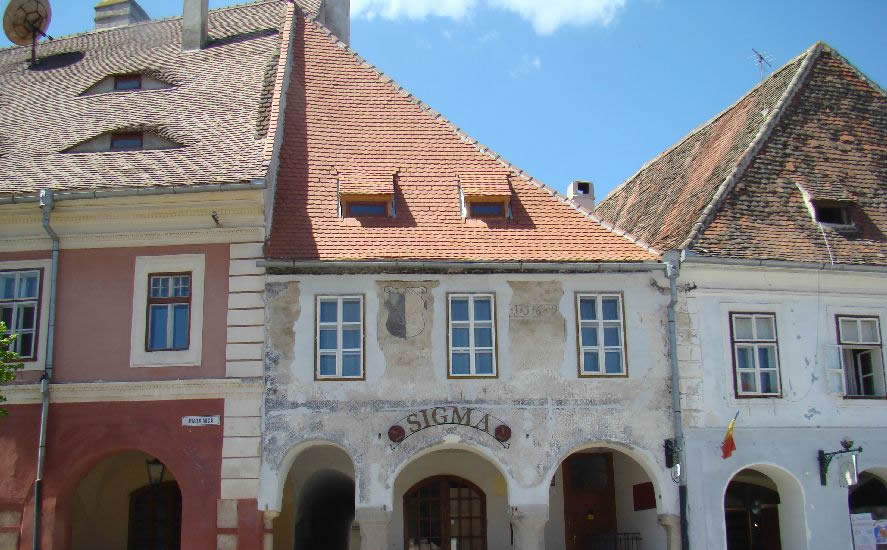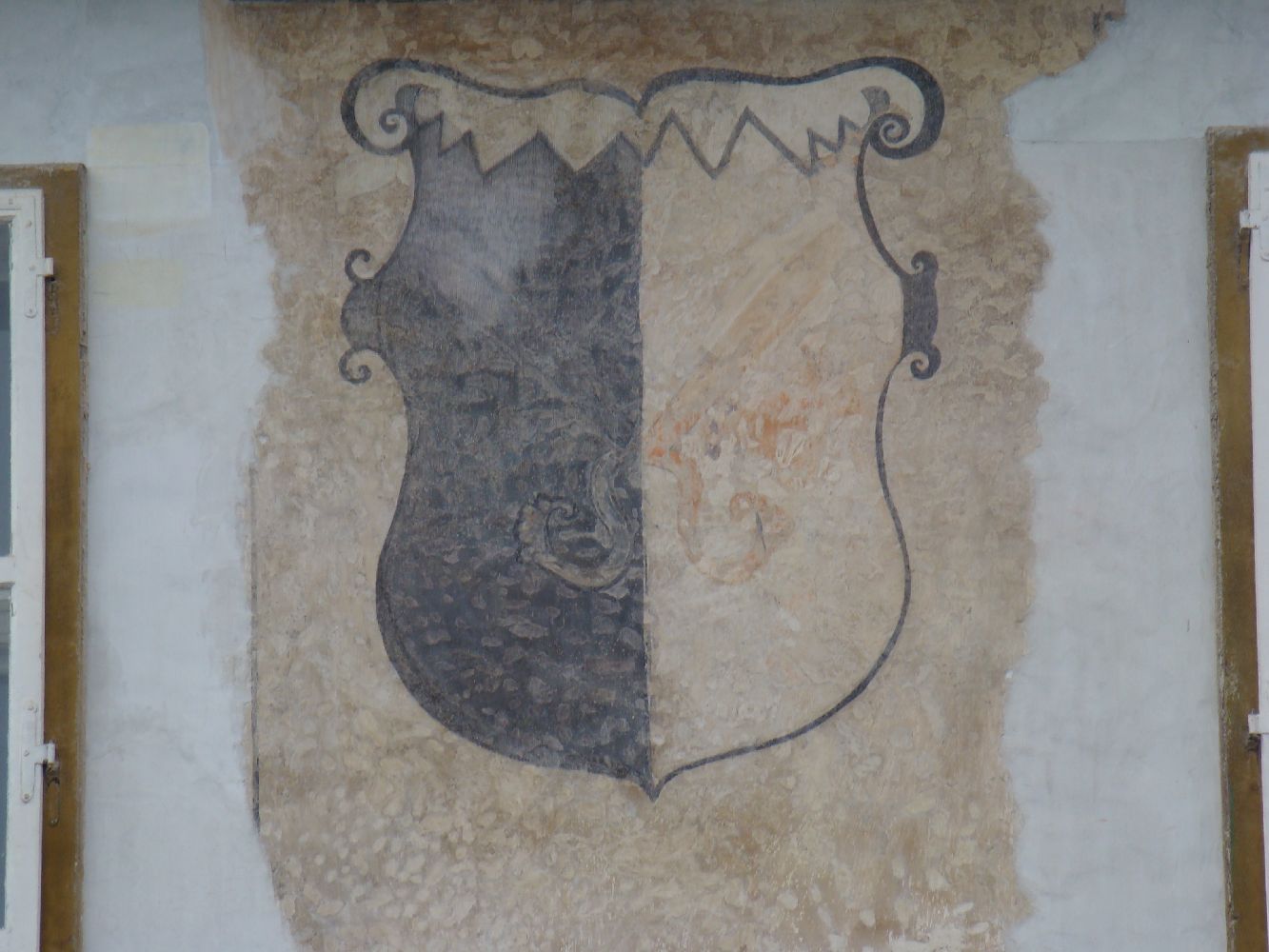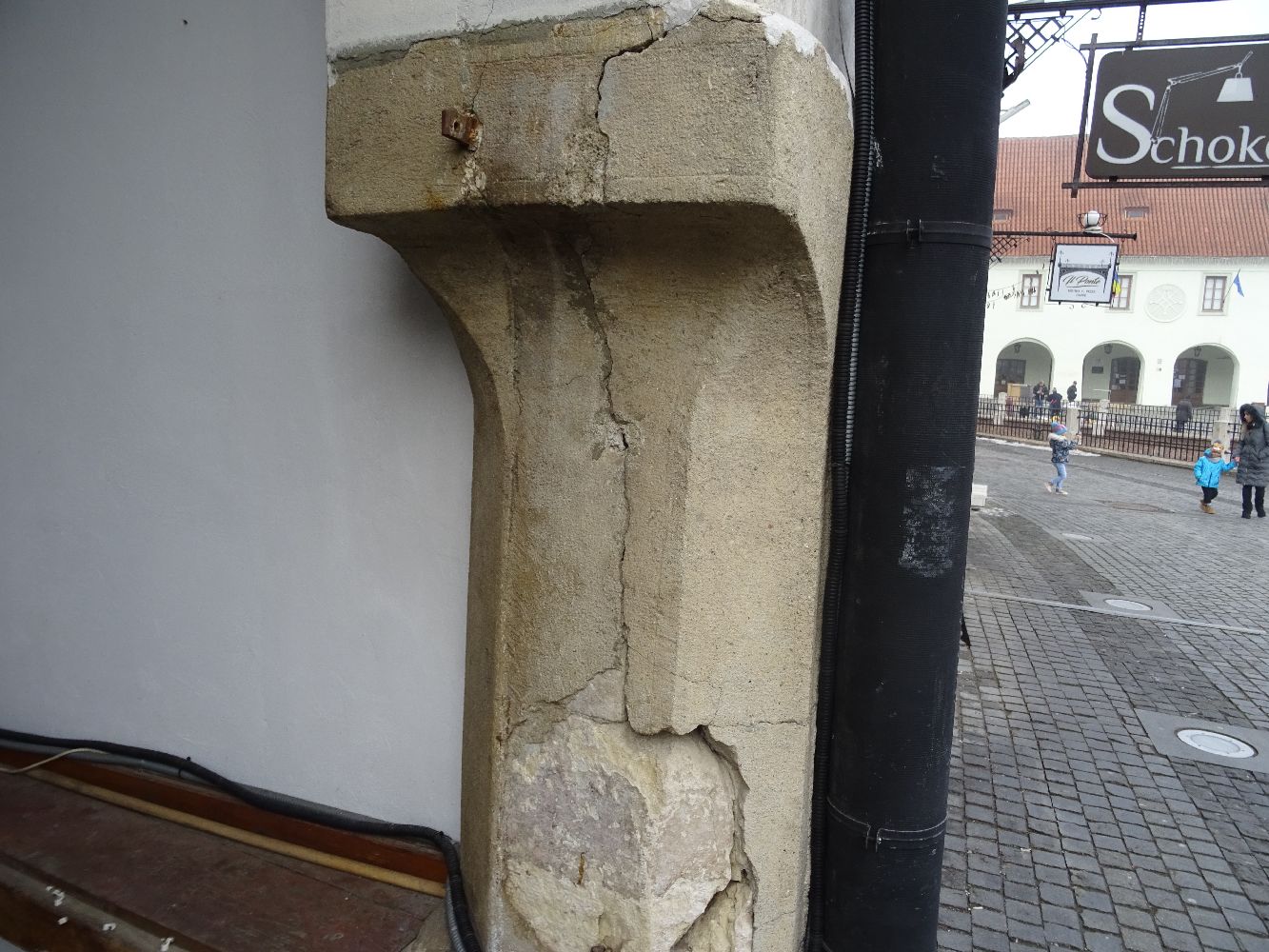No. 13, Small Square


1569 ( XV-XVI centuries; the end of the XVIII century)
Description:
It is a trapezoid building made up of basement, ground floor and floor with a small yard towards the Huet Square. The house incorporates on the ground level the narrow vaulted way between the two squares being called The Shoemakers’ Passage ( Schusterloch) as the Shoemakers guild had had the selling place nearby. On the ground level the frontage presents three openings supported on stone pillows in square shape with flattened edges and buried bases.
The frontage towards the Huet Square more narrow , has two traditional windows on the first and second floors. The three sided roof ( two towards the squares and one towards the house nr. 14) presents two dormer windows covered through inclination breaking in the main frontage. The ground level and floor rooms contain vaults with penetrations in the shape of a cross and double archways.
Special architectural elements:
- The passage towards the Huet Square
- The three ground level openings on square stone pillows
- The frontage with the coat of arms of the guild and the year inscriptioned
History:
The ground level was built in the XVth century on the place of the first fortifications. The level was added in 1569.
The first Romanian merchant run his business here – Gregorie Mateiu- born in Targoviste in 1809 and who later on bought the house. In the last decade of the XIXth century on Mateiu’s place is moved the Theodor Popescu’s cloth and knitgoods coming from nr. 2. In November 1912 the shop is closed. After the War the building is bought by Teodor Duboiu who opens in the ground floor The “ La Gligor” textiles shop. After his death , Vasile Hoza’s manufactures’ shop functiones until nationalization.
In the same house, in a room upstairs belonging to a young man called Petrovici, Ghe Bratianu had one of the hiding places ( the other one was in Vestem), during the 1848 Revolution.
MAP:
ALBUM
- Piaţa Mică
- No. 3, Small Square
- No. 6, Small Square
- No. 7, Small Square
- No. 8, Small Square
- No. 9, Small Square
- No. 10, Small Square
- No. 11, Small Square
- No. 12, Small Square
- No. 13, Small Square
- No. 14, Small Square
- No. 15, Small Square
- No. 16, Small Square
- No. 17, Small Square
- No. 21, Small Square
- No. 22, Small Square
- No. 23, Small Square
- No. 24, Small Square
- No. 25, Small Square
- No. 26, Small Square
- No. 27, Small Square
- No. 28, Small Square
- No. 29, Small Square
- No. 30, Small Square
- No. 31, Small Square
- The Liar’s Bridge


